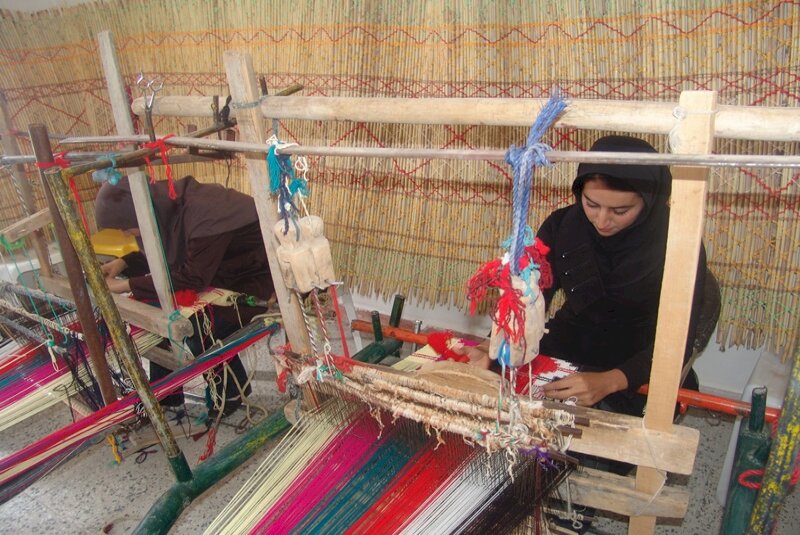Neglected craft of jajim-bafi to be revived in Ilam

TEHRAN- The ancient handicrafts skill of jajim-bafi, which had been almost fallen into oblivion, is planned to be revived in the western province of Ilam, the provincial tourism chief has said.
Jajim is a handwoven rug that is thick and has no lint, made of wool and cotton with long wrapping and stripped and colorful pattern.
Depending on the allocated budget, different jajim-bafi training courses will be held next year to promote this field, CHTN quoted Abdolmalek Shanbehzadeh as saying on Tuesday.
Moreover, the province’s Cultural Heritage, Tourism, and Handicrafts Department aims to make documentaries on jajim-bafi and grant permissions for individuals and workshops in this field, the official added.
Home to almost half of Iran’s UNESCO sites, western Iran is a land of hospitable people, wild extremes, and wilder history, and it may be an independent traveler's adventure playground. The region also witnessed the rise and fall of many great empires once bordering Mesopotamia, Ottoman Turkey, and Czarist Russia.
From the fecund Caspian coast to the stark, mountainous northern borders, and the crumbling desert ruins of the southern plains, the region hosts everything from paddy fields to blizzards to Persian gardens.
With 14 entries, Iran ranks first globally for the number of cities and villages registered by the World Crafts Council, as China with seven entries, Chile with four, and India with three ones come next.
In January 2020, the cities of Shiraz, Malayer, and Zanjan and the village of Qassemabad were designated by the WCC- Asia Pacific Region, putting Iran’s number of world crafts cities and villages from ten to 14.
The value of Iran’s handicrafts exports stood at $120 million during the first eleven months of the past Iranian calendar year 1399 (March 20, 2020 – February 18, 2021), Mehr reported. The country’s handicrafts exports slumped during the mentioned months in comparison to the same period last a year earlier due to the damage the coronavirus pandemic has inflicted on global trade.
The Islamic Republic exported $427 million worth of handicrafts during the first eleven months of the calendar year 1398. Of the figure, some $190 million was earned via suitcase trade (allowed for customs-free and tax-free transfer) through 20 provinces, according to data compiled by the Ministry of Cultural Heritage, Tourism and Handicrafts.
Ceramics, pottery vessels, handwoven cloths as well as personal ornamentations with precious and semi-precious gemstones are traditionally exported to Iraq, Afghanistan, Germany, the U.S., the UK, and other countries.
ABU/MG
Leave a Comment